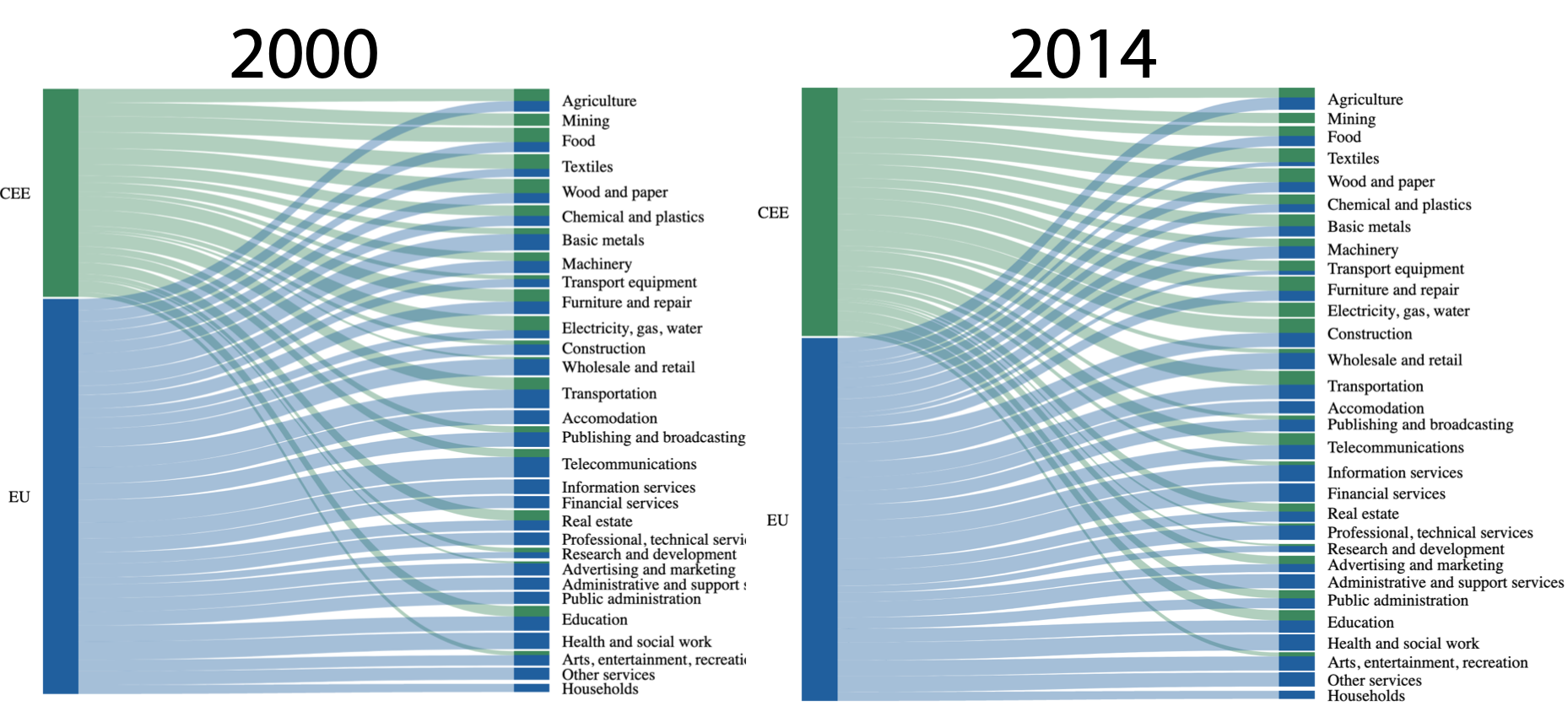Understanding European Integration with Bipartite Networks of Comparative Advantage

Core objectives of the European integration are convergence and economic growth, but these are challenged by competition and value chain asymmetries within the common market. A difficult challenge for the EU is how to harmonize the specialization of industries and countries to reach global competitiveness and at the same time bridge productivity differences across more and less developed countries.
Here, we develop a novel bipartite network approach and trace the pairwise similarity of revealed comparative advantage (RCA), a widely-used measure of specialization, within and between EU15 and Central and Eastern European (CEE) member states from 2000. This approach can be used to assess redundancies and division in the system as a whole, and at the level of industries and countries as well. This latter feature enables us to investigate how co-specialization across countries impacts economic growth. We find an overlap of RCA among CEE countries but a diverging RCA structure between EU15 and CEE.
Our econometric analysis indicates that productivity increases in those CEE industries that have co-specialized with other CEE countries after EU accession, while RCA similarity across CEE and EU15 countries is less related to productivity growth. These results inform European policy that a division of sectoral specialization can lead to productivity convergence between EU15 and CEE member states.